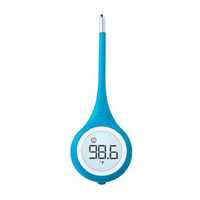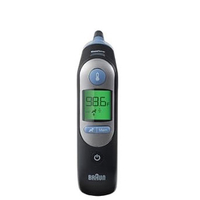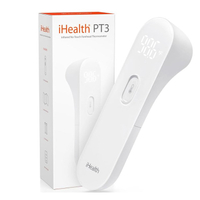What to look for when buying a health thermometer — a medical expert reveals all
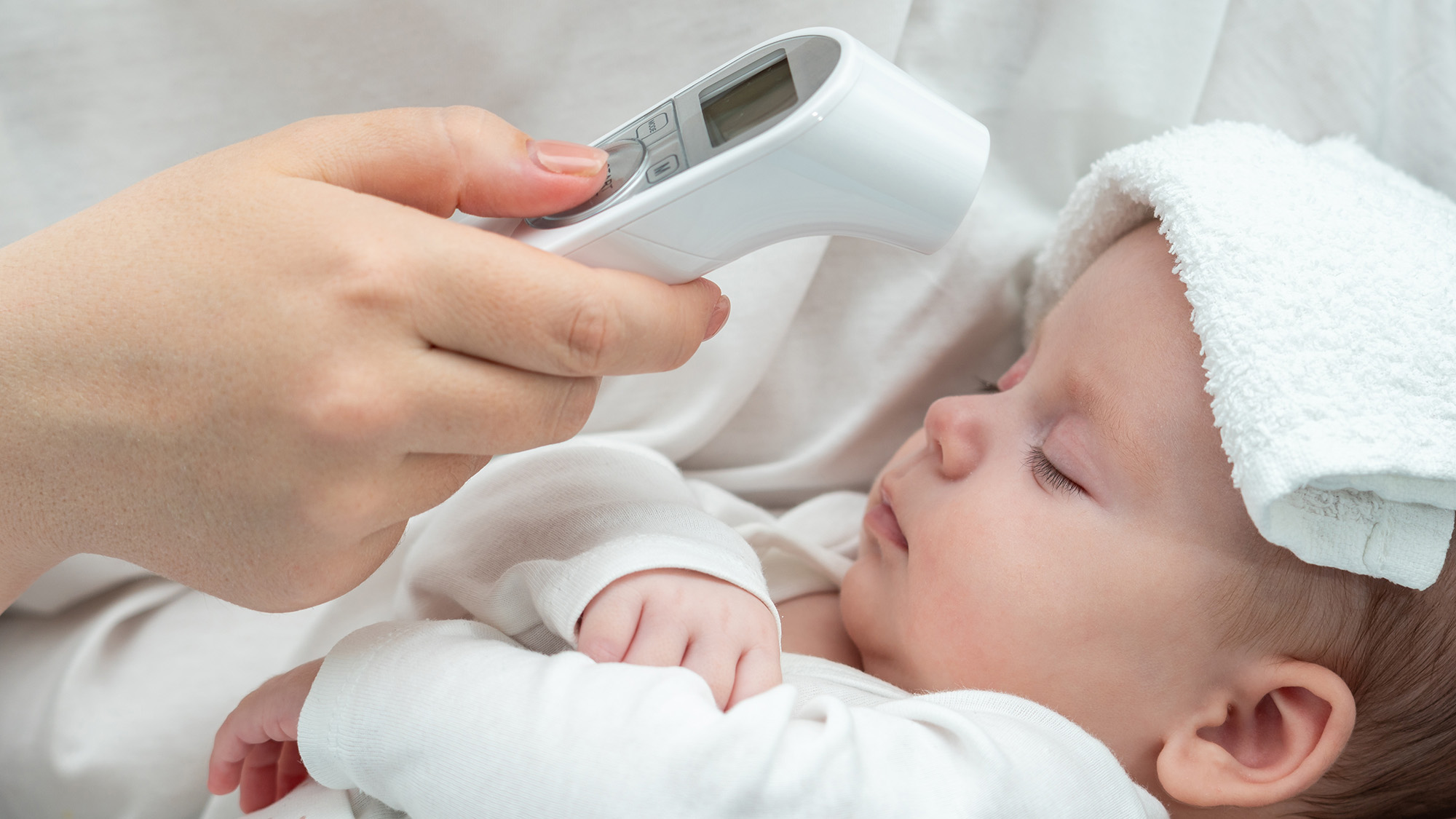
No matter the time of year, we are all susceptible to colds and fevers, but having one of the best thermometers can help us tell whether there is cause for concern.
Whatever your household may look like — whether you have young children or care for older relatives — a health thermometer is one piece of equipment that should be in every medical cabinet.
However, the best health thermometer for your needs will depend on many factors. You may need a device that is quick and unobtrusive to use on young babies or a thermometer that stores readings to track an illness over time. To help you decide what thermometer is best for you, we’ve called on the expertise of Dr. Michael Genovese, Physician and Chief Medical Advisor at Ascendant in New York.
Types of thermometers
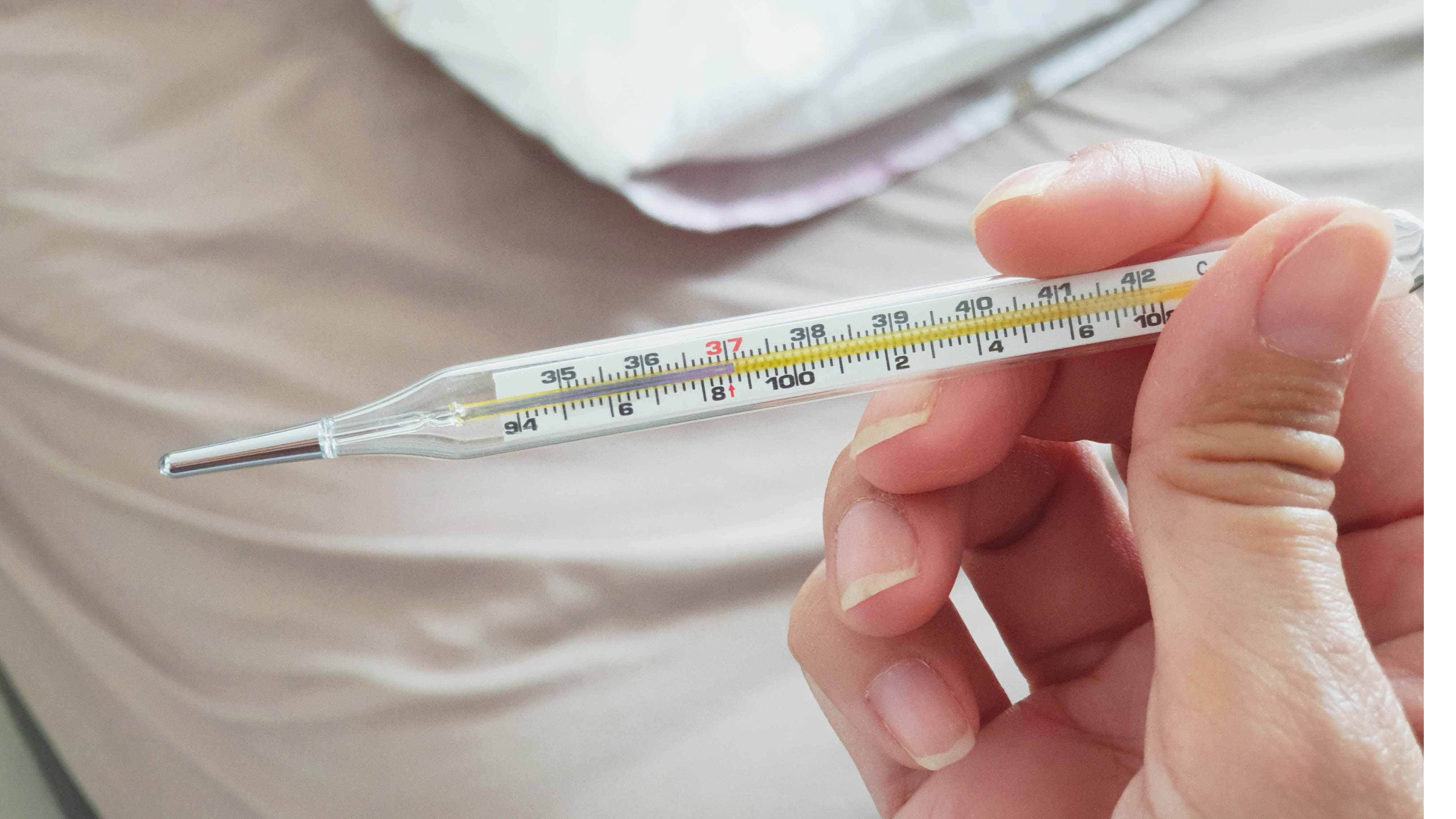
Before buying a thermometer, it helps to understand the pros and cons of each type. There are three to choose from: oral, ear, and forehead thermometers.
Oral thermometers
“These are the classic thermometers you place under your tongue,” says Dr. Genovese. “They use electronic sensors to give you a reading, usually within about 30 seconds to a minute.”
He explains that the advantage of oral thermometers is that they are accurate, easy to read, and budget-friendly. He adds that they are “perfect for adults and older kids who can keep it under their tongue.”
However, they are not great for everyone. As Dr. Genovese explains, “They can be a bit uncomfortable for some, especially younger children, and they require the person to stay still.”
Sign up to get the BEST of Tom's Guide direct to your inbox.
Get instant access to breaking news, the hottest reviews, great deals and helpful tips.
Kinsa QuickCare Smart Digital Thermometer: was $29 now $24 @ Amazon
This oral thermometer is recommended as the best family thermometer in our buying guide. It's easy to use, takes an average of 8 seconds to take a reading, and can be used with or without the Kinsa app. It has a flexible comfort tip, a backlit display for easy reading, and fever indication emoticons.
Ear thermometers
You might hear (pardon the pun) ear thermometers being referred to as tympanic thermometers, the medical term for eardrum. “These clever devices use infrared technology to measure the temperature inside the ear canal,” explains Dr. Genovese.
“They are quick — often giving results in just a few seconds — and less invasive, making them a good choice for older kids and adults,” he adds.
However, they do have a couple of disadvantages. Dr. Genovese says, “Accuracy can drop if not positioned just right, and they are not recommended for infants under six months because of the ear canal’s size.”
Braun ThermoScan 7: $53 @ Amazon
This ear thermometer is recommended as the best thermometer for infants in our buying guide. It uses infrared technology to quickly take your temperature via the ear, and comes with disposable lens filters which should be changed with every use. Its Age Precision feature also provides a handy age-appropriate fever guidance. Plus, it stores the last nine readings.
Forehead thermometers
Rather than being placed under the tongue or within the ear canal, Dr. Genovese explains that forehead thermometers measure the temporal artery on your forehead using infrared sensors. Exergen's Themporal Artery Thermometer is an example of a forehead thermometer.
“They are non-invasive, quick, and easy to use, especially for infants and toddlers. You can even use them while kids are sleeping!” he says.
They sound like the perfect thermometer, but you have to pay more for the ease of use. “They tend to be pricier and can be influenced by external factors like sweating or chilly environments,” explains Dr. Genovese.
iHealth No-Touch Forehead Thermometer: was $35 now $15 @ Amazon
This forehead thermometer is voted as the best overall thermometer in our buying guide, with a 5-star rating.
It's intuitive to use, gives results within one second, includes a handy LED display, features memory storage for the last reading and a silent mode. It's perfect when you want a quick reading, to monitor children, or if you need to take the temperature of multiple people.
The best thermometers for different age groups
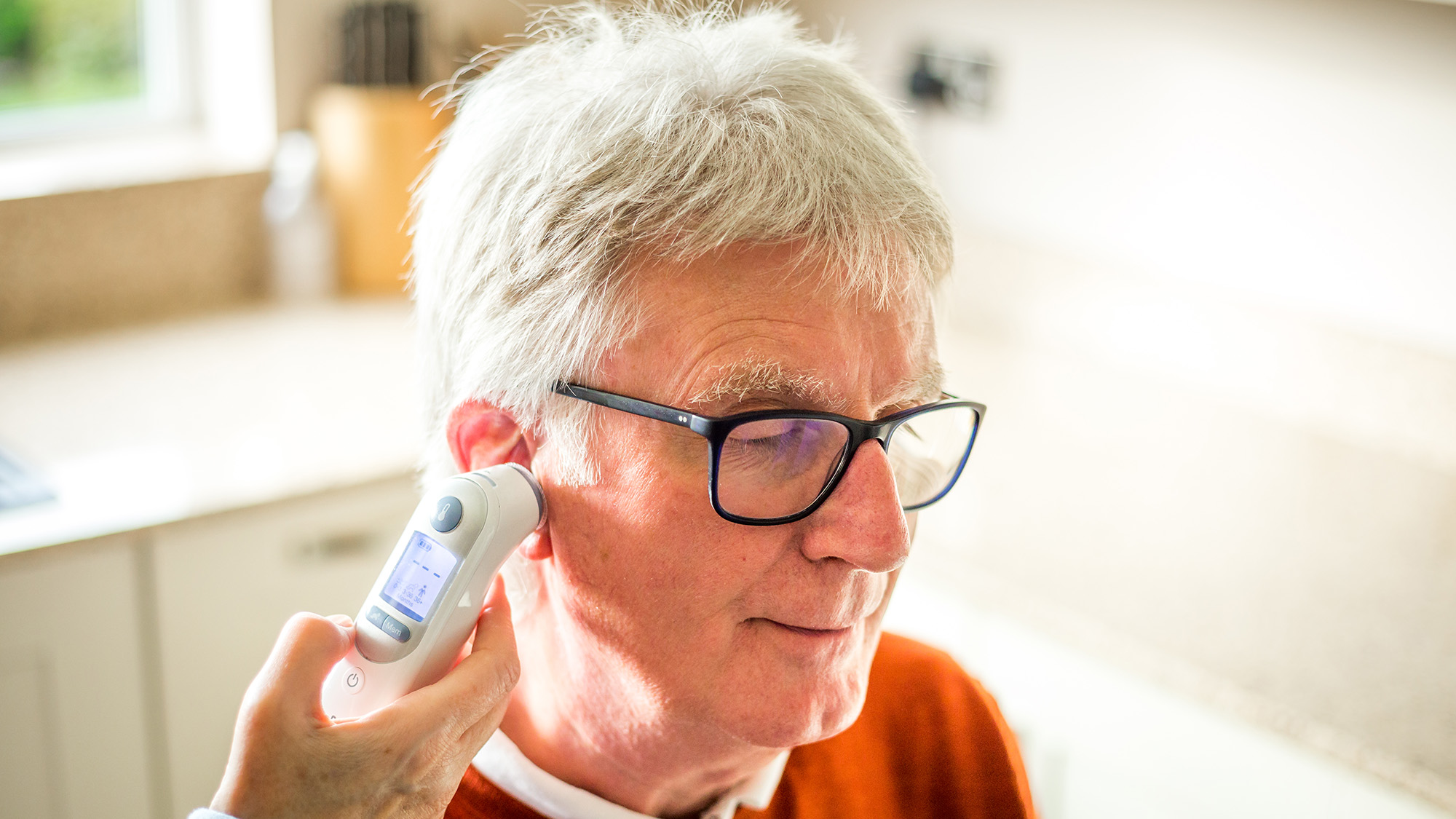
When buying a thermometer, it’s a good idea to base your choice on the age group’s needs, as this will help determine which thermometer is most suitable.
For infants and young children
Dr. Genovese recommends forehead or ear thermometers for infants and young children. “They are fantastic because they are quick and non-invasive.”
However, he adds that they are not suitable for babies under three months and refers to the American Academy of Pediatrics (AAP), which recommends using a rectal thermometer for accuracy, although a forehead and ear thermometer can be used for quick checks.
For adults
The best option for adults is an oral thermometer, as they are precise. But if you are looking for convenience, Dr. Genovese says a forehead thermometer might be the way to go, especially if you have children. This will save you from having two different thermometers in your medical cabinet.
For older adults
Dr. Genovese highly recommends forehead or ear thermometers for older adults. “They’re easier to use and less invasive, making them suitable for older adults who may have trouble with oral thermometers,” he says.
Finding the best thermometer for your family
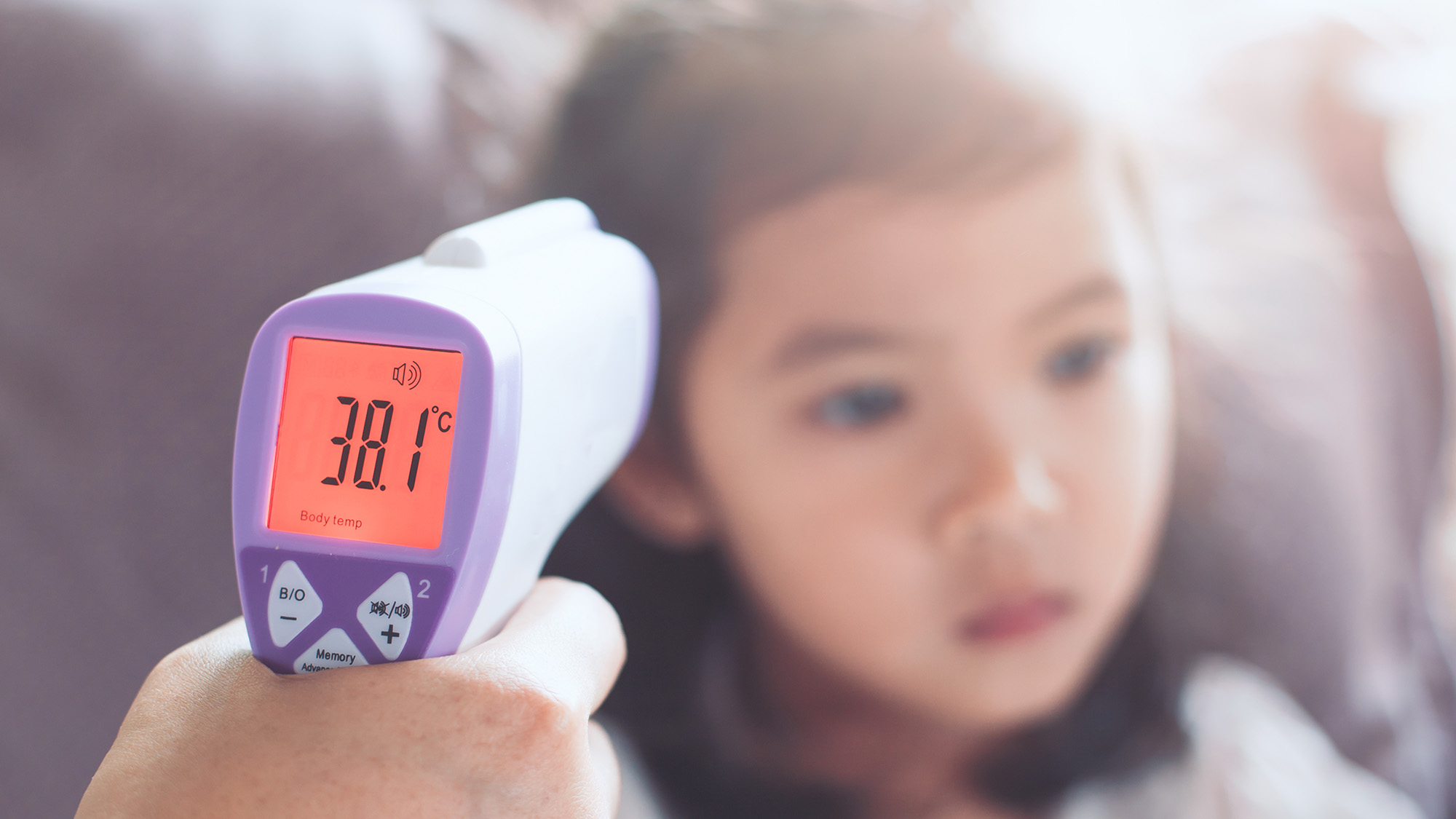
If you’re looking for a versatile option that suits everyone in your family, Dr Genovese recommends a forehead thermometer. “They are quick and easy to use and help keep things stress-free for parents and kids. While these might be more expensive, they can serve the whole family, making them worth the investment.”
How much should you spend on a thermometer?

A simple oral thermometer that you pop underneath your tongue will cost far less than a forehead thermometer, but does spending more on a thermometer make a big difference?
“Price can give you an idea of the features and quality you are getting, but it does not always guarantee accuracy,” says Dr. Genovese. “You can find decent digital thermometers for under $20, while more advanced forehead and ear thermometers can range from $30 to over $100.”
But before investing in an all-singing, all-dancing thermometer, Dr. Genovese says, “It is essential to consider your family’s specific needs. Sometimes, a reliable essential oral thermometer can do the job just as well as a fancy model.”
Do extra features matter?
Several extra features can make using a thermometer a bit easier, and I know from personal experience which features I value.
Light-up display
A light-up display is the one feature I’d always opt for when buying a thermometer. Dr. Genovese agrees, saying it allows you to check temperatures without waking everyone up with bright lights.
Fever alerts
Color-coded alerts are also super helpful: "They tell you when a fever is present and when it is time to call the doctor,” he says.
I always found this invaluable when my children were young and unable to tell me exactly how they felt. I can also see how having a fever alert would be helpful with older adults. My mom had dementia, which limited her ability to communicate clearly.
Silent mode
When you want to take the temperature of a sleeping child, a thermometer with a silent mode will prevent you from disturbing their sleep.
Memory storage
If you are monitoring an illness over a length of time, memory storage can help you keep track of changes in temperature.
More from Tom's Guide

Camilla Sharman has worked in publishing and marketing for over 30 years and has covered a wide range of sectors within the business and consumer industries both as a feature, content, and freelance writer.
As a business journalist, Camilla has researched articles for many different sectors from the jewellery industry to finance and tech, charities, and the arts. Whatever she’s covered, she enjoys delving deep and learning the ins and out of different topics, then conveying her research within engaging content that informs the reader. In her spare time, when she’s not in her kitchen experimenting with a new recipe, you’ll find her keeping fit at the gym. In the pool, stretching at a yoga class, or on a spin bike, exercise is her escape time. She also loves the great outdoors and if she’s not pottering about in her garden, she’ll be jumping on her bike for a gentle cycle ride.
